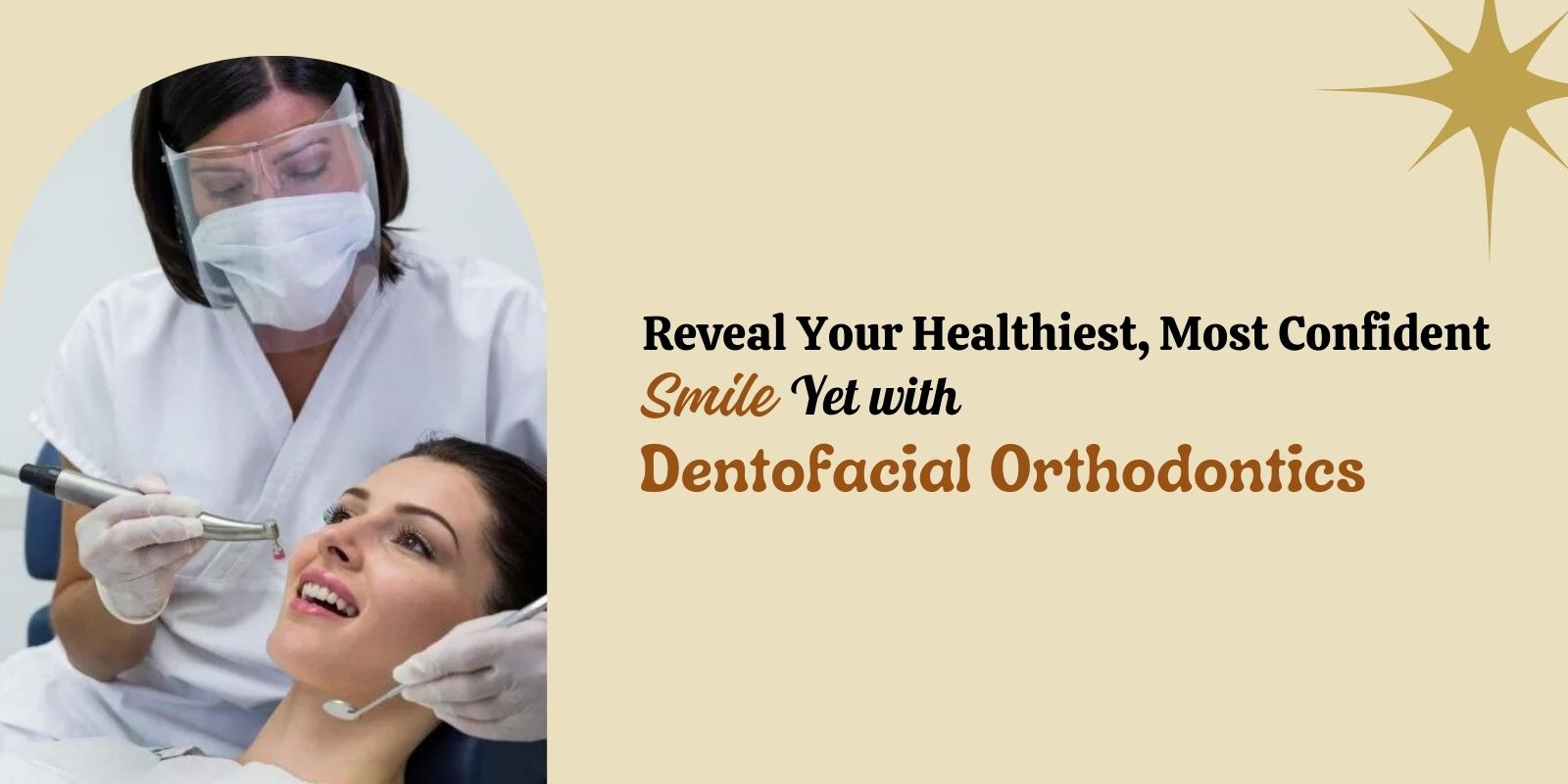Reveal Your Healthiest, Most Confident Smile Yet with Dentofacial Orthodontics

Dentofacial orthopaedics involves reshaping the jaw and facial bones to guide emerging teeth into their optimal positions. Also known as orthodontics, these techniques create a healthy bite, enhanced facial aesthetics and a radiant smile. Read on to learn about common dentofacial treatments and their many benefits.
Understanding Malocclusions Malocclusion refers to misalignment of the upper and lower arches expander of teeth, affecting bite and appearance. Issues like overcrowding, spacing, overjet, and crossbite can contribute to these problems. Dentofacial orthopaedics from an experienced professional can help realign the jaws and teeth effectively.
Common Dentofacial Devices and Appliances:
There are many exciting orthodontic appliances to resolve malocclusions and guide teeth into position. Common options include:
- Braces – Fixed metal or ceramic brackets are the most familiar orthodontic appliances. Clear aligner trays are also growing in popularity.
- Palatal Expanders – These devices widen the upper jaw to resolve crowding and crossbites.
- Herbst Appliances – Herbst appliances pull the lower jaw forward to correct underbites and overbites.
- Headgear – This appliance discourages excessive upper jaw growth to improve issues like overjet.
Each case presents unique needs, and the right devices are custom chosen to match the treatment plan.
Key Benefits of Dentofacial Orthodontics:
While an eye-catching smile may motivate many patients to seek treatment, dentofacial orthopaedics offers abundant oral health and well-being benefits as well. Straightening misaligned jaws and teeth:
- Corrects alignment for improved biting and chewing
- Reduces risk of dental decay and periodontal disease
- Discourages harmful oral habits like grinding
- Resolves speech impediments for clearer articulation
- Improves self-esteem and confidence
With a balanced and symmetrical smile, optimal function soon follows!
Best Ages for Dentofacial Intervention: Though dentofacial orthopaedics proves effective at any age, an ideal timeframe for many patients is during childhood as the head and jaws mature. Taking advantage of natural growth to guide emerging teeth can enhance efficiency and convenience compared to later treatment. Less invasive approaches also help when started early. However, adults also pursue care to resolve long unaddressed bite issues affecting dental health and appearance.
Overview of the Orthodontic Process:
While each patient’s treatment plan personalizes care to suit their needs, the general dentofacial orthopaedics process involves:
- Diagnostic records like photos, radiographs and impressions of the teeth
- Discussion of treatment plan options
- Initial appointment to place custom orthodontic appliances
- Follow-up visits for monitoring and adjustments
- Excellent oral hygiene and appliance maintenance at home
- Retention regimen to stabilize the teeth after treatment
With advances in accuracy and efficiency, this is an opportune time to benefit from dentofacial techniques.
Emerging Technologies: New technologies are continually evolving to make dentofacial orthopaedics more convenient, efficient, and comfortable. Advances like 3D imaging, digital treatment planning, clear aligner therapy, and temporary anchorage devices are improving accuracy and shortening treatment times. Orthodontists can now offer an array of options to suit each patient’s needs and preferences.
Supporting a Healthy Lifestyle: An appealing smile generated from dentofacial treatment can motivate patients to uphold the oral hygiene and healthy habits necessary to maintain optimal results long-term. When teeth are properly aligned, brushing and flossing become easier and more effective as well. This supports periodontal health alongside the balanced bite.
The Psychological Boost: In addition to physical oral health benefits, the psychological boost following orthodontic correction can be profound. Patients often experience enhanced self-image and skyrocketing confidence as their new smile reinforces, they look as good as they feel. Widened grins emerge effortlessly. This internal shift matches the external transformation.
A Team Approach: Modern orthodontic correction requires a skilled team effort for the best results. Your treatment will likely involve your orthodontist, periodontist, dentist, and dental hygienist working together to ensure healthy gums, solid oral hygiene habits, strong intact teeth and optimal smile aesthetics. Take advantage of each appointment to address your questions and concerns to these knowledgeable professionals.
Investing in Your Future: While dentofacial orthopaedics requires an investment of time, effort and finances, the lasting returns make it worthwhile for many. By setting up appropriate dental habits and bite alignment early, patients can sidestep extensive restorative interventions in the years ahead. Prevention now means predictability later. Protecting your oral health and self-confidence with dentofacial head braces treatment is investing in a vibrant future.
Tips for Adjusting to Orthodontic Appliances:
The first days and weeks with new orthodontic appliances can feel awkward. As your mouth adjusts, these tips help ease the transition:
- Stick to soft foods at first as you relearn how to bite and chew
- Use orthodontic wax to smooth irritation from brackets and wires
- Take over-the-counter pain relief if needed for soreness
- Gargle warm salt water to relieve inflammation and minor abrasions
- Avoid hard, chewy, sticky foods that could damage appliances
- Brush carefully around orthodontics, taking time to dislodge food particles
With a little patience and care, your mouth will soon adapt to your new appliances.
Oral Hygiene Musts
Effective at-home oral hygiene is critical during orthodontic treatment. Be diligent about:
- Brushing after meals and before bedtime
- Flossing at least once daily
- Rinsing thoroughly with water after eating to remove debris
- Using recommended cleaners for your appliances
- Attending all scheduled dental hygiene appointments
Proper care protects teeth, gums and appliances while preventing complications.
Common Orthodontic Emergencies:
Despite your best efforts, orthodontic emergencies like loose bands, damaged appliances or lost ligatures occasionally happen. Don’t panic! Simply call your orthodontist right away to schedule prompt repair. Leaving issues unchecked typically exacerbates matters. Listen to your body and contact your provider if intense pain, swelling or other concerns arise as well. They can determine if the issues require urgent care or modification of your treatment plan. Stay in communication with your 1A Orthodontics in London—it saves time, discomfort and usually, your beautiful smile!
Common Dentofacial Orthodontics Emergencies:
Here are some of the most common orthodontic emergencies that can occur with braces, retainers, and other appliances:
- Broken or loose brackets or bands. The cement holding the bracket to the tooth breaks away.
- Protruding wire. A wire sticks out and can poke or ulcerate the cheeks.
- Loose or lost ligature. The small elastic or wire tying the archwire to the bracket comes off.
- Dislodged headgear. Force from the headgear shifts the position of brackets or bands.
- Broken archwire. Excessive biting down on the archwire causes it to break.
- Loose expander. The screws come loose and the expander shifts.
- Lost or broken retainer. Teeth begin shifting rapidly without the retainer in place.
- Injured lips or gums. Brackets or wires cut or poke the oral tissue.
- Broken teeth or dental restorations. Damage from the orthodontic appliances placed on the teeth.
- Difficulty removing appliances. Fixed retainers or cement bonding the brackets fail to detach.
Seeking prompt care of dental head braces from an orthodontist for any emergency can prevent further damage and additional dental complications. They can also provide pain relief until any issues can be fully repaired.


